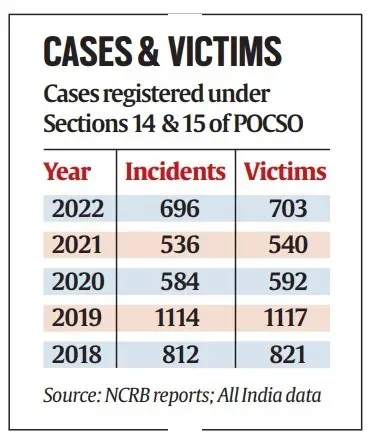Syllabus: GS2/ Polity and Governance
Context
- The Supreme Court held that viewing in private, downloading, storing, possessing, distributing or displaying pornographic acts involving children, attract criminal liability under the Protection of Children from Sexual Offences Act (POCSO), 2012 and the Information Technology Act, 2000.
Background
- The Supreme Court verdict was based on an appeal filed by NGO, Just Right for Children Alliance, against a Madras High Court decision.
- The High Court had concluded that watching or downloading pornographic acts involving children in private domains was not a crime under the POCSO Act.
Supreme Court ruling
- The Supreme Court urged the Parliament to amend the POCSO Act to substitute the term “child pornography” with “Child Sexual Exploitation and Abuse Material” or CSEAM.
- The term child pornography can lead to a trivialisation of the crime, as pornography is often seen as a consensual act between adults.
- The court said that Section 67B of the Information Technology (IT) Act had penalized the use, transmission and publication of obscene materials, including child pornography.
- It has also made browsing, creation, collection, online facilitation or enticement of children into any sexual act or conduct an offence.
- Section 15 of the POCSO Act penalizes storage of child pornography with an intention to share or transmit it.
- The court evolved the principle of ‘constructive possession’, which means a person was accountable if at any point of time he had an invariable degree of power and knowledge to control, manipulate, alter, modify or destroy the material.

Actions taken by India to address the issue
- Cyber Crime Unit (CCU): It handles cases under the Protection of Children from Sexual Offences (POCSO) Act and the Information Technology (IT) Act.
- Cyber Crime Prevention against Women and Children (CCPWC) Scheme: The objective is to have an effective mechanism to handle cyber crimes against women and children in the country.
- National Commission for Protection of Child Rights (NCPCR): It works with law enforcement agencies, conducts awareness campaigns, and intervenes in cases to ensure children’s safety.
- Indian Cyber Crime Coordination Centre (I4C): coordinates law enforcement efforts across the country to address cybercrime, including child pornography.
- Cyber Tipline: It is the place to report child sexual exploitation and is operated by The National Center for Missing and Exploited Children (NCMEC).
Concluding remarks
- The Supreme Court’s ruling marks a transformative step in redefining how child sexual exploitation crimes are viewed and addressed in India.
- The ruling has sent a strong message that society must no longer trivialise or mischaracterise these heinous acts.
- The court’s recommendations urge a comprehensive, multifaceted approach involving legislative changes, awareness regarding sex education in India, and support systems to protect children from exploitation and abuse.
Source: TH
Previous article
News In Short-23-09-2024